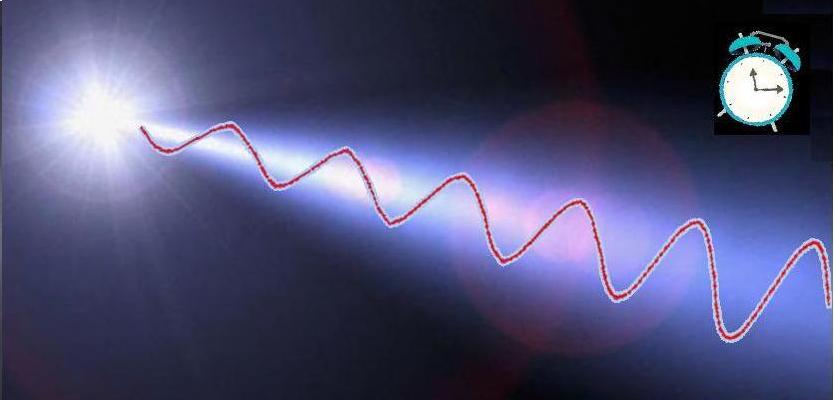
The Conspiracy of Light:
If
time dilation is not real and is just an illusion caused by motion and
the finite speed of light (C), then we must assume alternatively that
time is absolute and the speed of light is constant in at least one
preferred frame. It immediately follows that the velocity of light as
perceived from all other moving frames must be some velocity other than
C, namely C=+/-v, where v is the velocity of the moving frame. The fact
that light is perceived to be exactly C (on Earth) in all inertial
frames suggests that either: 1) relativity is correct, which leads us to a
series of paradoxes and contradictions regarding time, or 2) That the
speed of light C can change, but this change is somehow hidden from our
view. We
then define a "conspiracy of light" as any process in nature that is
capable of masking or hiding from our view the possible fact that the
velocity of any observer can add to or subtract from the measured speed
of light. If the conspiracy of light is real, it would mean that the currently accepted relativistic interpretation of nature can be replaced by one of a group of alterative theories involving absolute time and preferred frames of reference. This website seeks to examine the experimental evidence to date to see if it is possible to choose among these theoretical alternatives, which are essentially mathematically equivalent to relativity, and thus make similar predictions for the same experiments. Comparison of Select Experiments to Date:
?
= questionable - issues with full fit to evidence X
- contradicted by at least one piece of evidence
TBA
= write-up pending
Notes: 1) Sagnac experiments tend to imply that the speed of light is different in at least two frames, contradicting the constancy of the speed of light postulate of special relativity (SR). Recourse to general relativity (GR) is questionable in certain specific experiments, see writeups for details. 2) Any ether drift experiment that suggests that it is possible to detect earth's translational motion through space contradicts the idea of gravitational frame dragging. 3) In the Sagnac effect, rotation is ultimately with respect to the fixed stars (aka absolute space) - this contradicts the idea that the ECI frame of the earth could be a preferred frame for the speed of light. |



